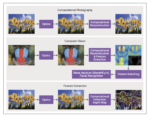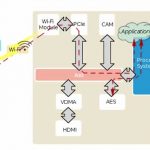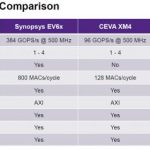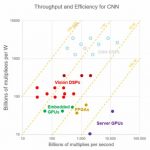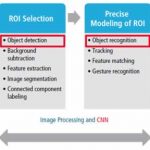Aberration-free optics are bulky and expensive. Thanks to high-performance AI-enabled processors and GPUs with abundant processing capabilities, image quality nowadays relies more on high computing power tied to miniaturized optics and sensors. Computational imaging is the new trend in imaging and relies on the fusion … Read More
Tag: embedded vision
Computational Imaging Craves System-Level Design and Simulation Tools to Leverage AI in Embedded Vision
Cadence Dives Deeper at Linley Fall Processor Conference
I wrote about Cadence AI IP not long ago when I covered the Cadence Automotive Summit at the end of July (Tensilica DNA 100 Brings the AI Inference Solution for Level 2 ADAS ECUs and Level 4 Autonomous Driving, Tensilica HiFi DSPs for What I Want to Hear, and What I Don’t Want to Hear). One of those two blogs remains one of my most widely … Read More
FPGAs for a few thousand devices more
An incredibly pervasive trend at last year’s ARM TechCon was the IoT, and I expect this year to bring even more of the same, but with a twist. Where last year was mostly focused on ultra-low power edge devices and the mbed ecosystem, this year is likely to show a better balance of ideas across all three IoT tiers. I also expect a slew of … Read More
Optimization and verification wins in IoT designs
Designers tend to put tons of energy into pre-silicon verification of SoCs, with millions of dollars on the line if a piece of silicon fails due to a design flaw. Are programmable logic designers, particularly those working with an SoC such as the Xilinx Zynq, flirting with danger by not putting enough effort into verification?… Read More
Synopsys Launch EV6x Vision Processor… Challenging the Competition!
When Synopsys bought Virage Logic in 2010, ARC processor IP was in the basket, but at that time ARC processor core was not the most powerful on the market, and by far. The launch of EV6x vision processor sounds like Synopsys has moved ARC processor core by several orders of magnitude in term of processing power. EV6x deliver up to 100X… Read More
10 signs on the neural-net-based ADAS road
Every day I read stuff about the coming of fully autonomous vehicles, and it’s not every day we get a technologist’s view of the hurdles faced in getting there. Chris Rowen, CTO of Cadence’s IP group, gave one of the best presentations I’ve seen on ADAS technology and convolutional neural networks (CNNs) at #53DAC, pointing… Read More
Cadence loads up on MACs for vision with CNNs
For vision DSP IP running convolutional neural networks (CNNs), a big driver of performance is increasing the bits processed per cycle with parallel MACs. Tom Simon did a great job in recent posts of introducing CNNs at a high level, so I’ll look at what is architecturally behind Cadence’s latest announcement: the Tensilica Vision… Read More
The Evolution of Smart Glass Design
The wearer says, “O.K., Glass” and glass leaps into action, performing most of the smartphone functions like check e-mails, take photos and videos, provide turn-by-turn navigation, and make and receive phone calls. Welcome to Smartphone 2.0.
Technology pundits called Google Glass the best thing that happened… Read More
GPP, GPU or Embedded Vision Dedicated Processor?
Before answering the question we should try to define what is behind “Vision”, which type of applications and evaluate this heterogeneous market weight. Embedded Vision (EV) is the use of computer vision in embedded systems to interpret meaning from image or video. In fact vision processing requires a lot of maths functions that… Read More


